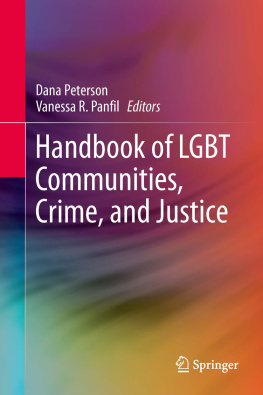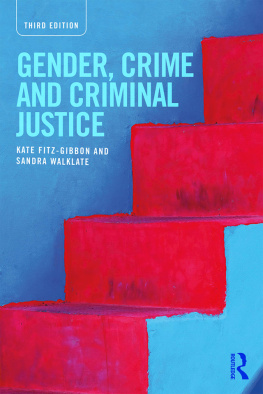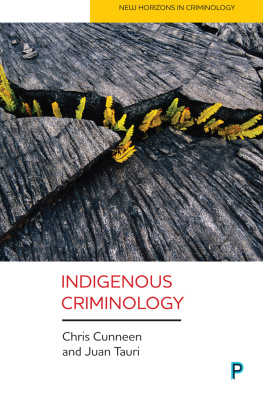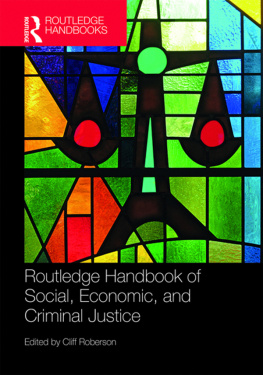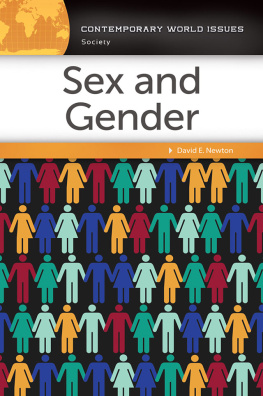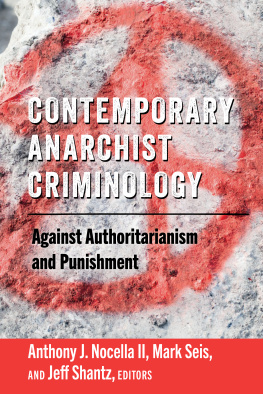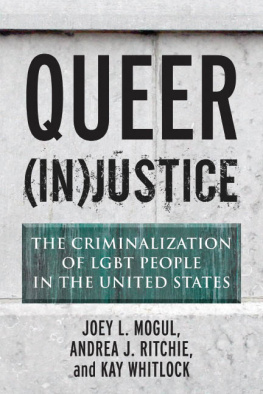1. Introduction: Reducing the Invisibility of Sexual and Gender Identities in Criminology and Criminal Justice
Individuals who are lesbian, gay, bisexual, and/or transgender (LGBT) have been largely absent in criminological and criminal justice (CCJ) theorizing and research. That is, although they are likely present in research samples, their sexual and/or gender identities are not interrogated as salient characteristics, as these are likely not even recognized at all. As a number of the authors in this Handbook detail, much of the research that has been conducted with LGBT individuals has examined their experiences as victims of intimate partner violence or bias/hate crimes, or, when their participation in criminal activity is discussed, it is often framed in terms of sexual deviance and sex work. The current state of the CCJ research therefore provides too narrow a view of the issues that students, scholars, and practitioners need to understand in order to appropriately address and respond to LGBT populations and to improve their situations and treatment in justice systems globally. It is our goal with this volume to bring together the scant and scattered scholarly work, including much original research, that can inform CCJ about LGBT communities experiences with regard to crime commission, crime victimization, juvenile and criminal justice systems, law and policy, public health, and human rights, in order to provide a more coherent and comprehensive awareness and understanding. With this volume, we also seek to identify and rectify educational, training, service, policy, and legal gaps in knowledge.
We want to acknowledge very explicitly at the outset of this volume our recognition that the acronym LGBT does not capture all of the gender, sexual, and/or political identities with which individuals discussed in the Handbook might identify. However, our intention is that the use of this acronym is an umbrella term, short-hand if you will, meant to encompass any and all individuals who identify themselves in ways that are within and outside of the narrow LGBT acronym and categorizations. Several authors in the Handbook (see chapters by Ball; Frederick; Johnson; Woods) take up discussion of the limiting and essentializing nature of such categorizations, and by no means do we intend our short-hand to contribute to or perpetuate the practice of forcing individuals into what become quite heterogeneous homogenous categories and that leave out many individuals completely. We therefore take this opportunity to remind the reader that gender and sexuality, and their intersections, are complex, fluid, and individual, and that our use of LGBT represents not just lesbian, gay, bisexual, and/or transgender individuals, but the full complement of gender- and sexual- (and intersecting gender X sexual) identities. Thus, we further explicitly acknowledge (as do a number of the authors) intersectional identities; that is, persons are not defined and do not define themselves in terms of only their sexual and gender identities, but also in terms of their race, ethnicity, culture of origin, socioeconomic status, and so on. These characteristics, and persons experiences based upon them, are not merely additive but intersectional and multiplicative. We therefore note that while the Handbook is framed around just a few facets of identity, this is not to the exclusion of other identities, but rather only to bring awareness of gender and sexual identities to the forefront. Indeed, structural factors in the lives of queer people such as race, socioeconomic status, and region may themselves complicate hegemonic notions of sexual and gender identity.
How the Volume Came to be and Other Queer Tales
The most proximal impetus for this collection emerged from the 2011 annual meeting of the American Society of Criminology (ASC), held in Washington, DC. The second author had experienced previous difficulty in placement of her research with queer youth populations on ill-fitting panels; the panels were hodge-podge collections with no thematic thread, or organizers made assumptions about the nature of the work. For example, one year she was placed on a panel with scholars of youth sexual violence (though those words appeared in her presentation, they were certainly not in that order!). It seemed criminologists were befuddled with just what to do with such work (and, even finding an appropriate topic area, pre-defined by conference organizers, to which to submit an abstract was a challenge). We decided instead that she should organize her own panel and invite authors doing work on similar topics; thus was entered onto the conference program the panel entitled The Role of Identity in LGBT Individuals Responses to Violence, chaired by the first author and with papers presented by the second author (on gay gang- and crime-involved young mens use of violence to respond to anti-gay harassment), by Andrea Nichols and Jody Miller (on intersectional identities and experiences of Sri Lankan nachchi sex workers), and by Laura S. Logan (on queer womens resistance to street harassment). These papers highlighted that, while experiences of violence and the construction and negotiation of identity apply to all people, the individuals in these studies experience them from particular places, from intersections of sexual orientation and gender identity that structure their experiences of and responses to victimization. Further, the authors demonstrated that, relevant to CCJ, certain aspects of violence cannot be understood, and violence prevention efforts mounted, unless the roles of sexual orientation and gender identity, within the context of societal heterosexism, are taken into account. These salient intersections, we (and others) argue, must be examined and understood in diverse disciplines and not limited to places like womens studies programs, queer studies programs, urban studies, and so on; CCJ can provide an interdisciplinary context that brings these perspectives togetherprovided we open our eyes to the issues.
Importantly, the panel attracted the attention of an Editor at Springer Publishing, who contacted the first author to inquire whether we would be interested in submitting a book prospectus on the topic of the panel. As evidenced by the existence of this Handbook , we jumped at the opportunity, not just to further work about LGBT individuals responses to violence (highlighting their agency), but to bring together for CCJ a collection of work dealing with a range of issues about LGBT people and their interactions with legal systems and, even more broadly, integrating perspectives of justice, health, and human rights in hopes, ultimately, of improving theory, research, and practice in all of these areas, globally. That a well-known publisher of criminological and criminal justice titles was interested in promoting this work was a welcome sign and an indicator of shifts within CCJ that are beginning to allow space for consideration of these issues.

